BioRangers has used bioremediation to perform more projects for decontamination of oil-polluted soil and groundwater than anyone else in Japan. What has made that possible is our unique Oppenheimer Bioremediation approach.
The Oppenheimer Bioremediation approach combines the Oppenheimer Formula, a complex biopreparation offering high decomposition effectiveness and low environmental impact, with bioaugmentation, the most efficient bioremediation method. Enabling decontamination in much shorter timeframes than past bioremediation approaches and using microorganisms with no negative impact on ecosystems, the Oppenheimer Bioremediation approach decontaminates soil and groundwater safely and reliably within a short timeframe.
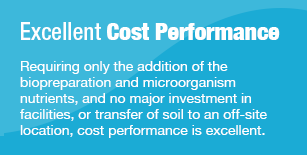
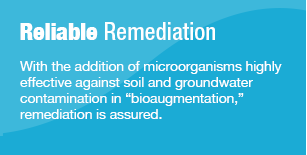
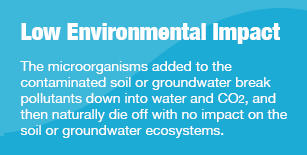
Before any bioremediation work is actually conducted, we perform treatability testing to confirm biopreparation effectiveness. If effectiveness is indicated, we estimate the time and cost of completing a remediation project. We handle all project preparations, as well as the actual bioremediation work, and our performance of all functions beginning with treatability testing, proceeding through project preparation, implementation, and monitoring means customers receive economically priced services performed with excellent reliability.
* Outside companies may be engaged to perform preparatory work depending on the extent of work required.
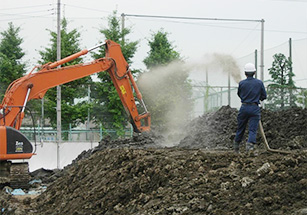 Decontaminating soil
Decontaminating soil
Biopreparation effectiveness against the pollutants in the soil or groundwater sample provided is verified in treatability testing.

Through meticulous consultation and an on-site survey, we develop and propose a remediation plan optimal for the customer's needs.

We perform preparatory work in accordance with the remediation plan, and take responsibility for ensuring the proper conditions are established for project implementation.

We periodically take samples and measure remediation effectiveness, and take steps like adding microorganism nutrients or biopreparation as needed.
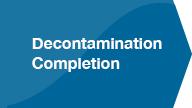
Decontamination work is deemed completed when the results of regular monitoring indicate that pollutant levels have been reduced, and are holding steady below, regulatory levels.
We recommend the decontamination method most effective for a given case based on meticulous site examinations and customer consultations.